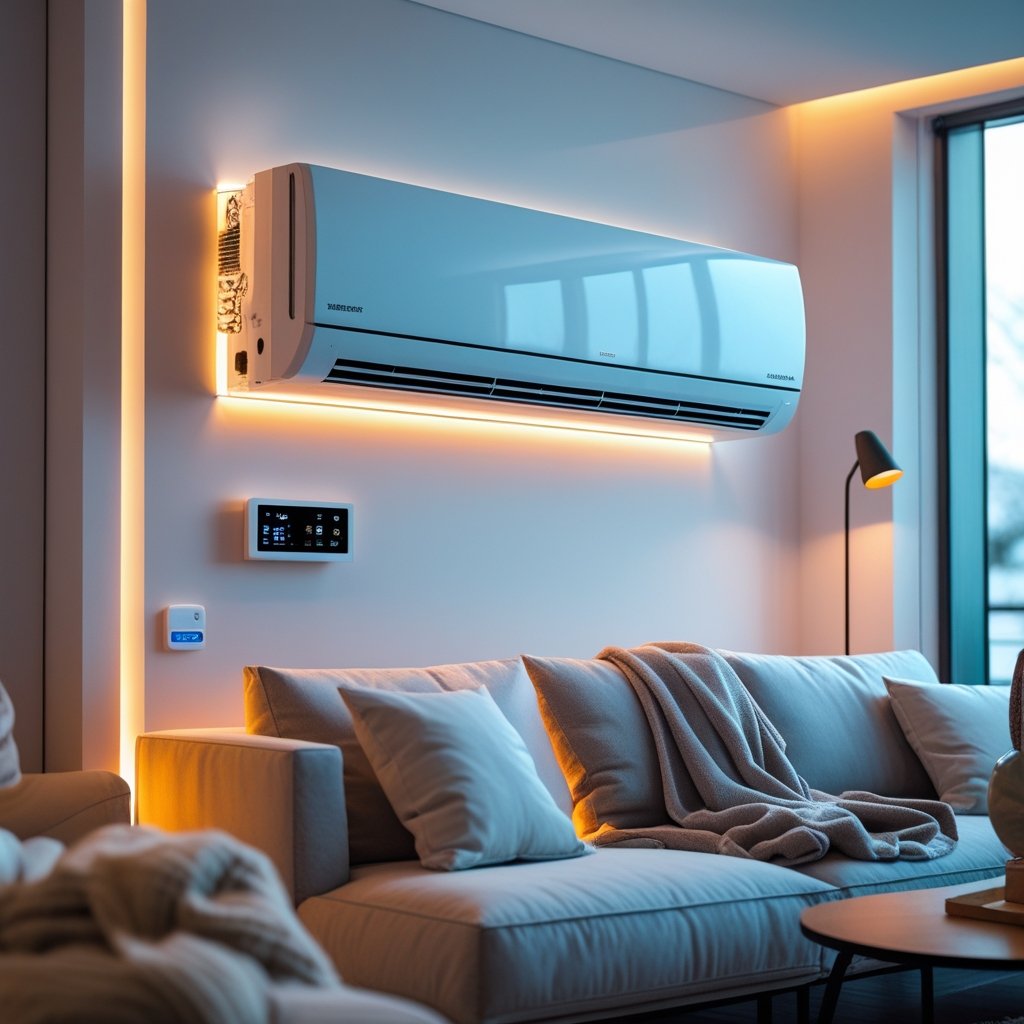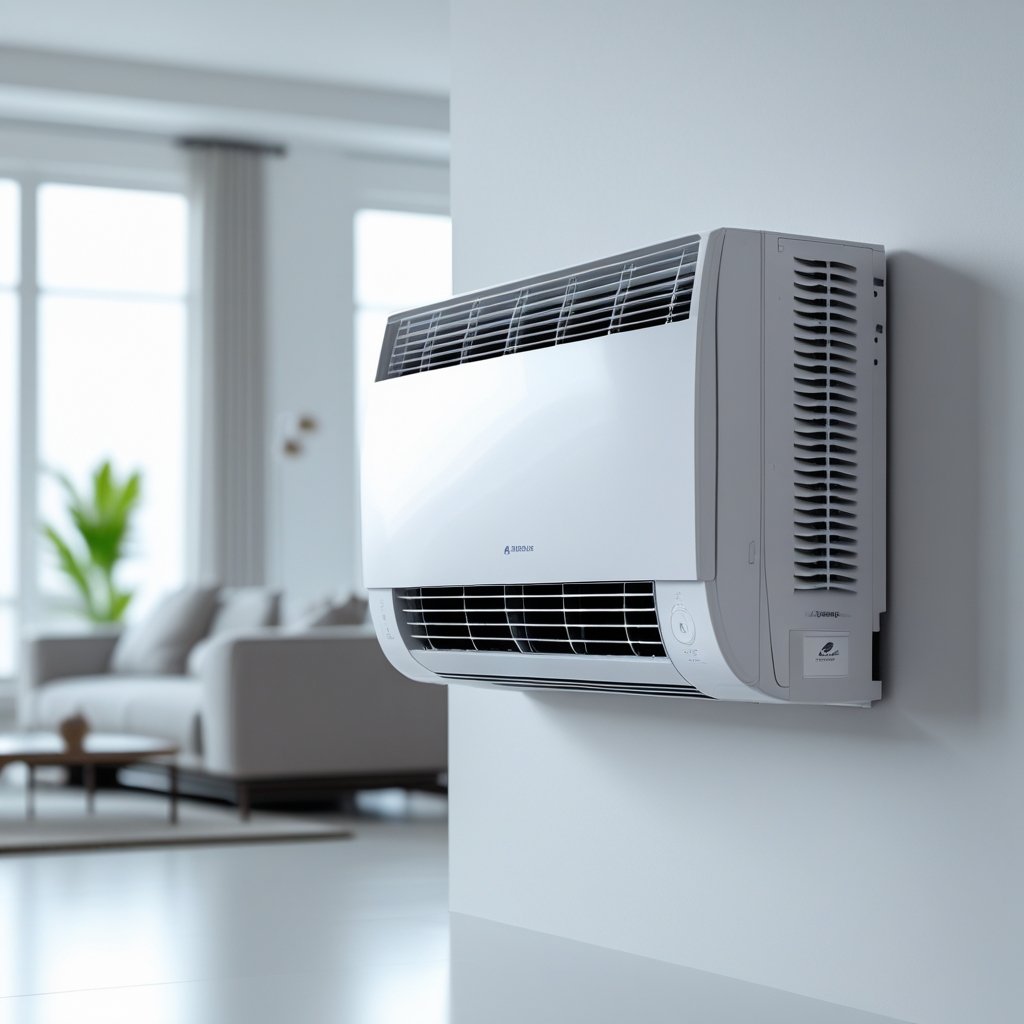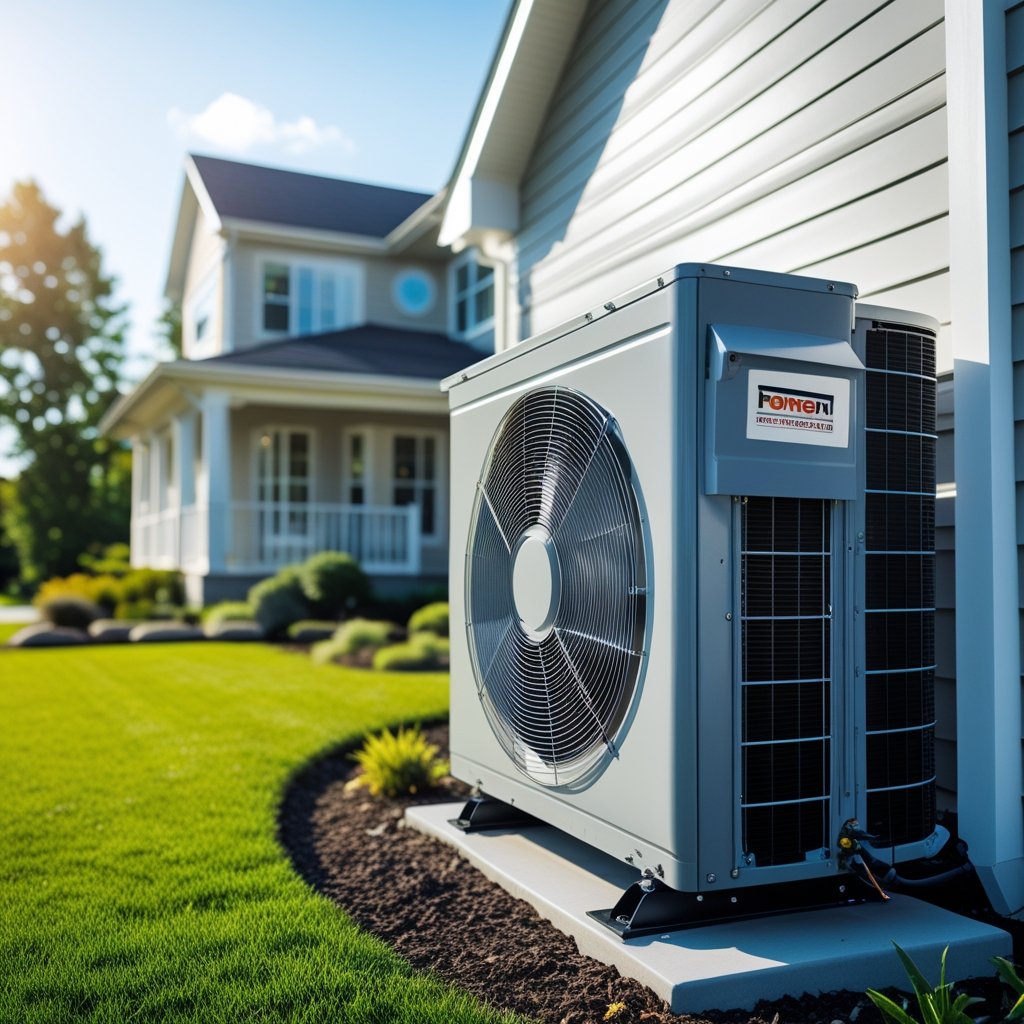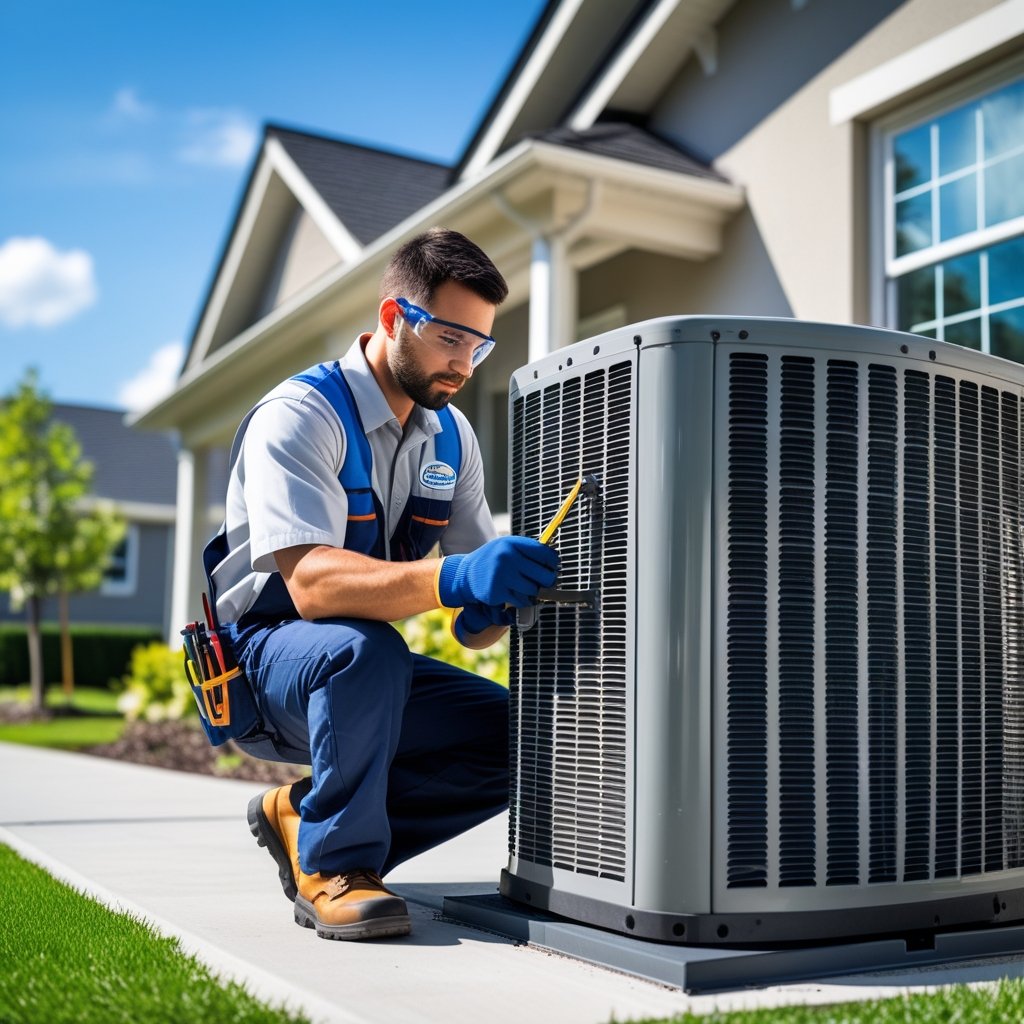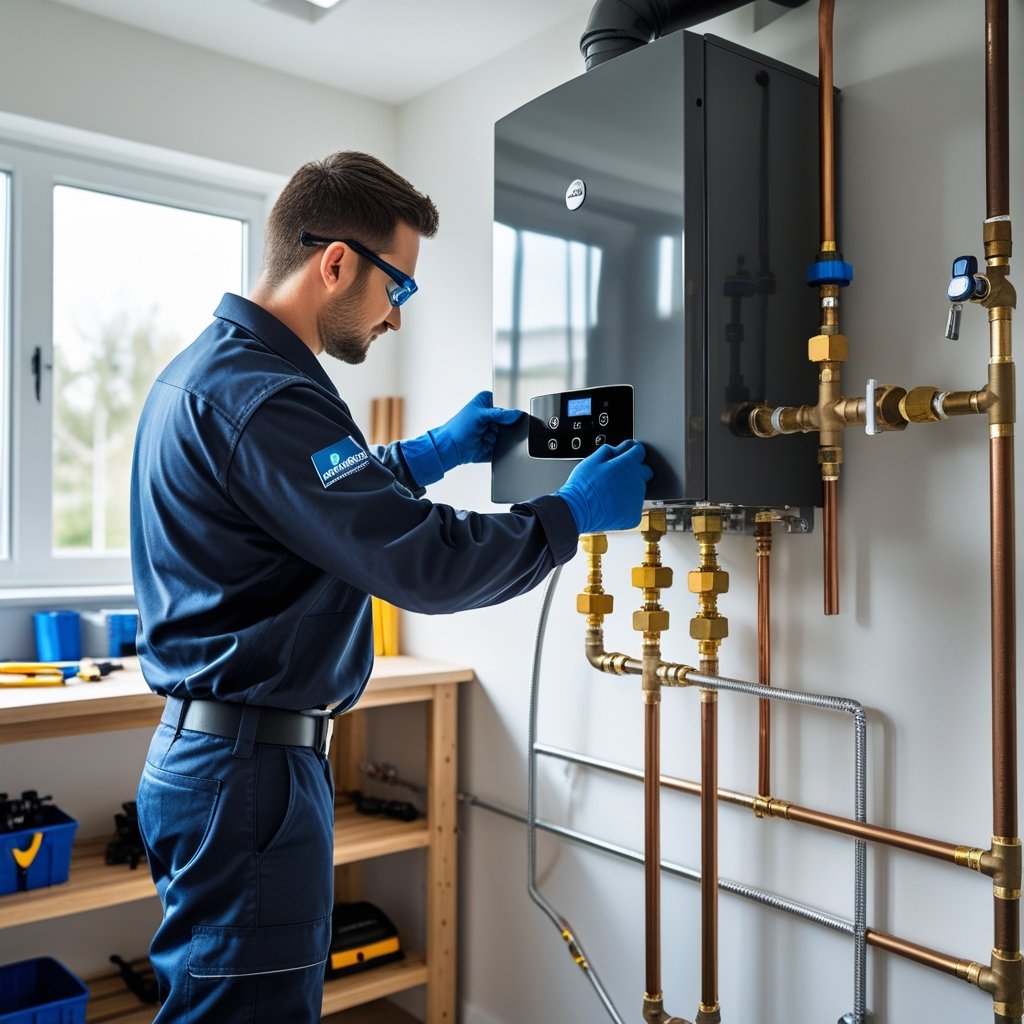Thinking about adding a mini-split system to your home? Cost’s probably one of your first questions. In places like Lancaster County or York, installing a ductless mini-split system usually starts around $1,800—including equipment and labor. The price changes depending on your home’s size and how tricky the installation is.
At Leo Kob Co., we try to keep pricing clear and upfront—no sneaky surprises. If you know the costs ahead of time, you can plan better and maybe even find some rebates to make your investment easier on the wallet. Mini-split systems are efficient and comfortable, so they can save you money down the road.
Average Cost of Mini Split System
Mini split system prices swing quite a bit—location, home size, and number of zones all matter. Knowing the details helps you set a budget and get the best value for your money.
National Pricing Ranges
Across the U.S., mini split systems for a single zone, installed, usually run between $2,000 and $5,000. Bigger homes or more zones? Expect higher prices.
Labor’s a big chunk—about 30-50% of the total cost. If you’re in Elizabethtown or Lancaster County, local experts like Leo Kob Co. offer fair rates and transparent pricing. The job’s complexity and any electrical upgrades can bump up the price.
Typical Cost Per Zone
Every indoor air handler (each “zone”) adds to the total. A one-zone mini split might be $2,000 to $3,000, and each extra zone tacks on about $700 to $1,200.
So, a two-zone setup? That’s often $3,500 to $5,000 installed. The more zones, the more control—but also the bigger the bill. Local contractors like Leo Kob Co. can help you figure out how many zones make sense for your place.
Breakdown by System Size
System size is measured in BTUs (British Thermal Units). Here’s a quick look at common sizes and what they might cost, installed:
System Size (BTUs)Typical Installed Cost 9,000 BTU (small)$2,000 to $2,80012,000 BTU (medium)$2,500 to $3,50018,000 BTU (large)$3,000 to $4,20024,000 BTU (extra)$3,500 to $5,000
Pick the right size so you’re not overpaying or stuck with a system that can’t keep up. If you’re in York or Hershey, local pros can help you dial in the right fit.
Factors That Affect Mini Split System Costs
Several things push mini split prices up or down: how many indoor units you want, which brand/model you pick, and the system’s efficiency. Getting a handle on these helps you budget and pick the right setup.
Number of Indoor Units
More indoor units mean higher costs. Each one handles a separate room or zone, so you get more control but pay more.
A single-zone system is cheaper and simpler than a multi-zone setup with three or more units. Multiple units take more time and labor, too.
If you want steady comfort in different rooms—especially in places like Elizabethtown or Lancaster County—adding units might be worth it. Leo Kob Co. can walk you through what makes sense for your space and budget.
Brand and Model Selection
Brand reputation and features matter. Big names usually cost more, but you’re paying for reliability and support.
Some models have extras like Wi-Fi, super quiet operation, or fancy air filters. Sure, you’ll pay more, but sometimes the convenience is worth it.
Try to balance your needs and your budget. No point paying for bells and whistles you’ll never use.
Performance and Efficiency Ratings
Mini splits have SEER (cooling) and HSPF (heating) ratings. Higher numbers mean better efficiency and lower utility bills.
Efficient systems cost more upfront, but they might qualify for rebates or incentives in South Central PA (York, Hershey, etc.).
If you go for a high-efficiency system, you’ll likely save money long-term and shrink your environmental footprint. Leo Kob Co. can help you find a system that works for your needs—without going overboard.
Installation Expenses
A mini-split install isn’t just about the unit. The work, equipment, and how tricky the job is all feed into the final bill. Knowing what’s involved helps you prepare and sidestep surprises.
Labor Costs
Labor covers the time and skill needed to put everything together. In South Central PA—think Elizabethtown or Lancaster County—labor usually starts around $1,500 to $2,000. That’s for mounting units, running refrigerant lines, and hooking up electrical wiring.
Skilled techs make sure your system’s set up for top performance. If your house is complicated or you want lots of zones, labor goes up. Hourly rates tend to hover around $100 to $150, but contractors like Leo Kob Co. often give flat bids based on the job.
Material and Equipment Fees
Besides labor, you’ve got the cost of the mini-split units and all the stuff that goes with them. A typical single-zone system, with equipment, is about $2,000 to $3,000.
You’ll need things like linesets, wiring, wall mounts, and condensate drains. Those can add $300 or more, depending on your setup. Energy-efficient models cost more up front, but you might snag rebates and save down the line.
All materials have to meet local codes, especially in York and Hershey, for safety and warranty reasons.
Complexity of Installation
If your home’s tricky, costs go up. Hard-to-reach spots, wall changes, or new electrical circuits can all drive up the bill.
Need multiple indoor units in different rooms? Budget for more time and materials.
Older homes might need wiring upgrades or a new electrical panel before you even get started. Leo Kob Co. takes a look at your setup and gives honest estimates—no hidden fees.
It’s smart to plan for hiccups so you’re not caught off guard.
Additional Costs to Consider
A few extra costs might sneak into your mini-split project. Electrical updates and permits/inspections can add up. Knowing about these ahead of time helps you avoid sticker shock.
Electrical Upgrades
Sometimes, your mini-split needs a beefier electrical panel or a new circuit. If your current panel’s old or maxed out, upgrades can run $1,200 to $3,500.
You might also need a dedicated circuit for the system. Extra wiring or a new breaker? That’ll cost more.
Leo Kob Co. does electrical assessments around Lancaster County to see if your home’s ready. Good electrical work means fewer headaches down the road.
Permits and Inspections
Most towns want a permit for mini-split installs. Fees are usually $100 to $300, depending on where you live.
After the job’s done, an inspector checks everything—system, wiring, safety, the works. It’s an extra step, but it protects your investment.
Inspections can take a little extra time and money, but they’re worth it—especially in York and Elizabethtown.
Mini Split System Price by Type
Your mini split’s price depends on the type you pick. How many zones you want and whether it’s ducted or ductless make a difference.
Single-Zone vs Multi-Zone Systems
Single-zone mini splits heat or cool one area. They’re cheaper—$1,500 to $3,000 installed. Setup’s pretty simple, great for smaller spaces like a bedroom or office.
Multi-zone systems handle several rooms with one outdoor unit and multiple indoor ones. Prices start around $3,500 and can go over $7,000. More materials, more labor, more cost—but you get more flexibility.
If you’re in Elizabethtown or Lancaster County, Leo Kob Co. can help you figure out which works best for your home and budget.
Ducted vs Ductless Mini Splits
Ductless mini splits are the go-to choice. They push air right into each room through a wall- or ceiling-mounted unit. Most run $2,000 to $5,000 installed, and you skip the expense and hassle of ductwork.
Ducted mini splits use hidden ducts, kind of like traditional HVAC. They’re pricier—often $5,000 to $8,000 or more. The upside? They look cleaner and give you even heating/cooling, but installation is a bigger deal since ducts need to fit in your walls or ceilings.
In York or Hershey, Leo Kob Co. keeps pricing honest—no upsells, just what fits your needs.
Energy Efficiency and Long-Term Savings
Mini splits use less energy than old-school heating and cooling systems. That means lower monthly bills, especially if you’ve got multiple zones. Only heat or cool the spaces you’re actually using—simple, right?
Most mini splits come with SEER ratings: higher means more efficient. If you install a high-SEER system in Lancaster County or Elizabethtown, you could qualify for energy rebates or tax credits. Those perks help offset your upfront spend.
What’s in it for you with mini splits?
- Lower energy bills
- Less strain on your HVAC system
- Zoned comfort
- Quiet operation
At Leo Kob Co., we always recommend regular maintenance to keep things humming. A simple tune-up now and then can save you from big repair bills and stretch your unit’s life. Think of it as protecting your investment, whether you’re in York or Mount Joy.
Mini splits offer steady comfort—no wild temperature swings. That not only saves energy but also makes your home feel better, day in and day out. Leo Kob Co. has served South Central Pennsylvania since 1904. You’ll get quality service at a fair price—no gimmicks, just honest work.
Comparing Mini Split Cost to Traditional HVAC Systems
Mini splits usually cost more upfront than traditional HVAC systems. Installation runs anywhere from $3,000 to $7,000, depending on how many zones you want. Central air or furnace setups tend to start lower, often in the $2,500 to $5,000 range.
But here’s the thing—mini splits can save you money on your energy bills over time. Since you can heat or cool only the rooms you’re actually using, you don’t waste energy on empty spaces. That’s a huge plus, especially if you’ve got a bigger house or just want more control over the temperature in each room.
Let’s break it down:
System TypeInitial CostEnergy SavingsMaintenance Mini Split$3,000 - $7,000High (zoned control)Lower (easy access)Traditional HVAC$2,500 - $5,000ModerateHigher (ductwork)
Traditional HVAC systems use ducts, which means extra expenses for cleaning and repairs. Mini splits? No ducts, so you can skip those headaches.
If you’re in South Central Pennsylvania, companies like Leo Kob Co. can help you figure out what works for your home and wallet. They’re known for honest pricing and solid service in Lancaster, York, Elizabethtown, and nearby towns.
If you’re leaning toward a mini split, it might feel like a bigger investment at first, but you get better comfort and savings in the long run. Tight budget? Ask about maintenance plans—those can help you avoid surprise costs and keep things running smoothly.
How to Save on Mini Split System Costs
Want to save on a mini split? Look for deals that cut upfront costs and think carefully about your installation options. Sometimes it’s just about timing, or knowing where to look for rebates.
Seasonal Discounts and Rebates
Manufacturers and utilities often roll out rebates or discounts during certain times of year. You’ll usually find the best deals in spring or fall, when fewer people are shopping for HVAC systems.
If you’re around Lancaster or Elizabethtown, check for energy-saving rebates on mini splits. These can come from state programs or your utility company.
A few pointers:
- Search for rebates that help with system or installation costs.
- Ask Leo Kob Co. about current deals in York or Hershey.
- Try to schedule your purchase during the slow season—labor costs may drop.
These moves can bring down your initial investment and keep more cash in your pocket.
DIY vs Professional Installation
Thinking about installing a mini split yourself? It’s tempting, but it’s not always simple. Professional installation makes sure your system works right and meets local codes, which can save you a lot of trouble down the road.
Here’s a quick comparison:
FactorDIY InstallationProfessional Installation Skill LevelNeeds technical know-howPros handle it allWarrantyMight void warranty if DIYWarranty usually includedEfficiencyRisk of mistakesSet up for best performanceSafetyPossible risks (electrical, refrigerant)Proper tools and safety measures
If you’re in Mount Joy or Lancaster County, a pro like Leo Kob Co. will take care of permits and inspections. That way, your system’s built to last.
With professional installation, you’re paying for quality and peace of mind—less hassle, and typically better savings over time.
Frequently Asked Questions
Mini split costs depend on size, location, and how complicated the installation ends up being. Knowing what affects the price—and if a mini split fits your heating and cooling needs—makes planning a lot easier.
How much does it usually cost to install a mini split air conditioner?
Most installations start around $1,500 and can go up to $5,000 or more. The price changes based on how many zones you need, the size of the system, and whether your home needs things like electrical upgrades.
What is the price range for a mini split system suitable for a 1,000 square foot area?
For about 1,000 square feet, a single-zone mini split typically costs between $2,000 and $3,500. That’s including the unit and professional installation.
Are mini split systems more cost-effective for heating and cooling compared to traditional systems?
Generally, yes. Mini splits use advanced heat pump tech that saves energy all year. You’ll usually see lower utility bills compared to traditional systems, especially in moderate climates like Elizabethtown or Lancaster County.
How does the cost of installation vary for mini split systems at different retail outlets?
Prices can swing a lot depending on where you shop. Some retailers include installation, others don’t. Local contractors like Leo Kob Co. offer upfront pricing and quality service, so you know what you’re paying for.
Can I use a mini split system for both cooling and heating my home?
Absolutely. Mini splits handle both heating and cooling, so you get year-round comfort no matter if you’re in Mount Joy, York, or Hershey.
What factors should I consider when calculating the installation cost of a mini split system?
Think about how many indoor units you’ll need, the kind of electrical work your space might demand, and if you’ll have to mess with any ductwork or knock holes in the wall. Don’t forget about maintenance plans—those can sneak up on you later. Oh, and in South Central Pennsylvania, you might luck out with some rebates, so keep an eye on that.

